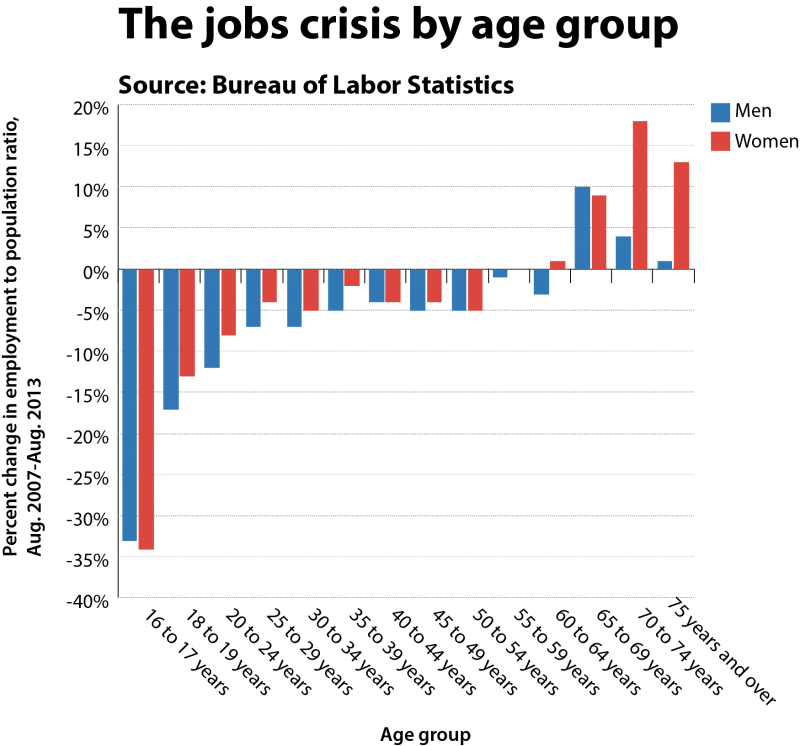A dearth of investment in young workers
Here is my latest New York Times column, excerpt:
For Americans aged 16 to 24 who aren’t enrolled in school, the employment picture is grim. Only 36 percent are working full time, down 10 percentage points from 2007. Longer term, the overall labor-force participation rate for that age group has dropped 20 percentage points for men and 14 points for women since 1989.
This lack of jobs will damage the long-term careers of a big chunk of the next working generation. Not working after you finish school very often means missing out on developing the skills and habits that will serve you well later on. The current employment numbers are therefore like a telescope into the future labor market: a 23-year-old who is working part time as a dog walker, yoga instructor or retail clerk may be having fun, but perhaps will receive fewer promotions as a 47-year-old.
And:
Employers appear to be more risk-averse, more concerned about overhead costs and less willing to invest in developing young workers’ skills. And that seems true across a wide variety of sectors.
In the legal profession, for instance, there is less interest in hiring junior associates and grooming them for partner status. Colleges and universities are often more interested in hiring adjuncts than tenure-track young faculty members. And publishing houses, instead of providing a big advance upfront and investing in young authors over a series of books, now expect many writers to earn their share of a book’s revenue through royalties.
There are further relevant points in the article. And here is an FT article about more and more young British people living at home.
Here is a compelling visual from Wonkbook:
